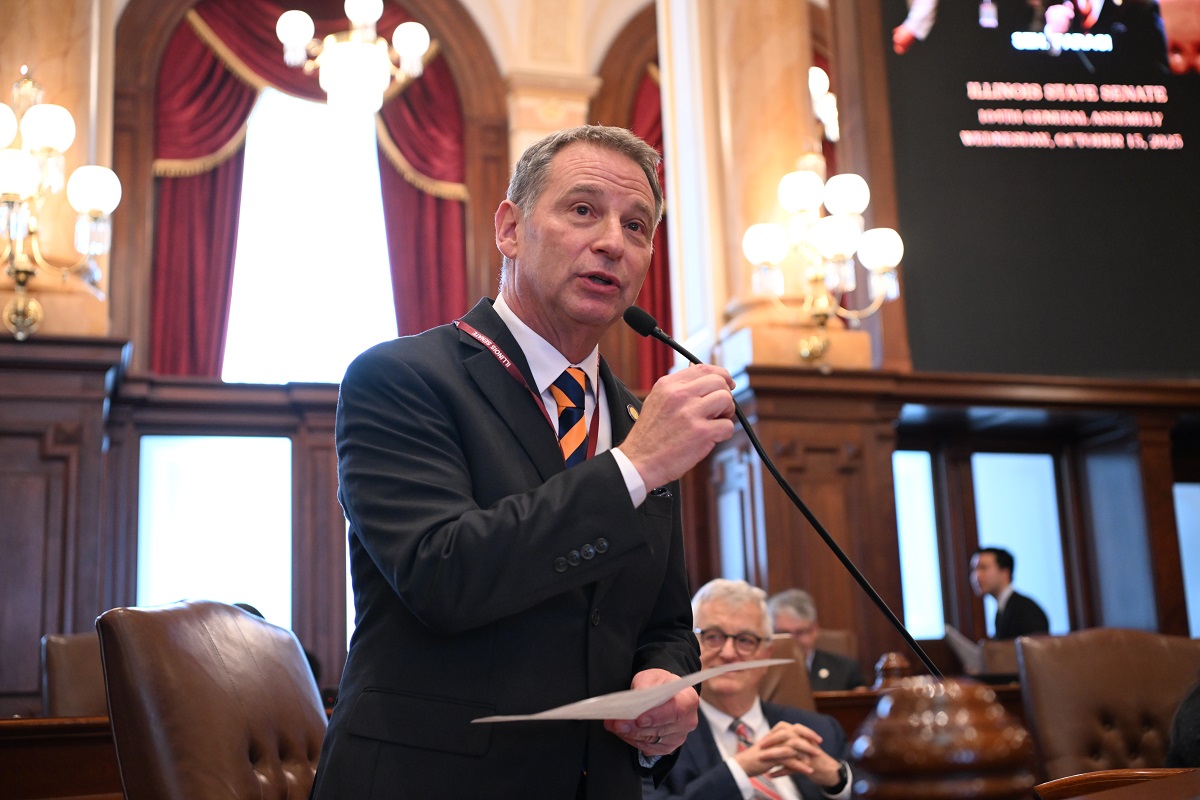 SPRINGFIELD – A law sponsored by State Senator Paul Faraci will ensure families of students with disabilities have access to life-changing financial tools by requiring schools to share information about the Illinois’ ABLE savings program with parents of students who have 504 plans beginning with the 2026-27 academic year.
SPRINGFIELD – A law sponsored by State Senator Paul Faraci will ensure families of students with disabilities have access to life-changing financial tools by requiring schools to share information about the Illinois’ ABLE savings program with parents of students who have 504 plans beginning with the 2026-27 academic year.
“Individuals with disabilities – especially students – need focused care, ranging from specialized education to medical care to transportation services, all of which can be a financial challenge for families,” said Faraci (D-Champaign). “This law ensures Illinoisans know they can save for disability-related expenses without worrying about losing access to vital federal benefits – giving them much-needed flexibility with their finances.”
Illinois Achieving a Better Life Experience accounts make it possible for people with disabilities and their families to save and invest their money for expenses related to living with a disability, offering greater financial independence while preserving vital public health benefits – like SSI or Medicaid. The Illinois ABLE program promotes independence, reduces reliance on public assistance and encourages greater economic participation by individuals with disabilities.
 SPRINGFIELD – When a person with developmental disabilities goes missing, time is of the essence – but existing alert systems do not always address their unique needs. That will change Jan. 1, thanks to a new law from State Senator Paul Faraci that creates the Golden Search Awareness Program, ensuring law enforcement, families and communities have the tools to respond effectively.
SPRINGFIELD – When a person with developmental disabilities goes missing, time is of the essence – but existing alert systems do not always address their unique needs. That will change Jan. 1, thanks to a new law from State Senator Paul Faraci that creates the Golden Search Awareness Program, ensuring law enforcement, families and communities have the tools to respond effectively.
“Illinois currently uses AMBER Alerts, EMPA Alerts and Silver Alerts, but we need a specialized alert system for vulnerable populations – especially individuals who may not understand the dangers they’re in or can’t effectively communicate,” said Faraci (D-Champaign). “Implementing the Golden Search Awareness Program ensures we have a specific protocol in place to notify the public and police when at-risk Illinoisans go missing.”
Faraci’s law establishes a Golden Search Task Force, which will work to implement a statewide awareness program – in coordination with the Endangered Missing Person Advisory – to account for the specific needs of individuals with developmental disabilities. This initiative will help educate communities, law enforcement and organizations that support individuals with disabilities, making certain they know how to recognize and respond when someone with developmental disabilities goes missing.
 CHAMPAIGN – State Senator Paul Faraci and Illinois Treasurer Michael Frerichs recently teamed up to return $44,000 to the Champaign County Treasurer’s Office.
CHAMPAIGN – State Senator Paul Faraci and Illinois Treasurer Michael Frerichs recently teamed up to return $44,000 to the Champaign County Treasurer’s Office.
“We’re all committed to ensuring strong public finances, and I’m proud to partner with Treasurers Frerichs and Clark to safeguard every penny,” said Faraci (D-Champaign). “I hope Champaign County residents will take five minutes to visit the ICash website to see if they too have funds to claim.”
The money, owed to the county from Frontier Communications, came in over the summer to the State Treasurer’s Office, which is responsible for returning missing money to Illinois residents through the ICash program. Faraci quickly worked with newly appointed County Treasurer Byron Clark to help with the claims process. Treasurer Clark said he is thankful that the money is back where it belongs.
 CHAMPAIGN – State Senator Paul Faraci is urging federal lawmakers to resolve the ongoing government shutdown to prevent the cessation of Supplemental Nutrition Assistance Program, or SNAP, benefits, come Nov. 1. Nearly two million Illinois residents rely on SNAP to provide basic nutrition for themselves and their families.
CHAMPAIGN – State Senator Paul Faraci is urging federal lawmakers to resolve the ongoing government shutdown to prevent the cessation of Supplemental Nutrition Assistance Program, or SNAP, benefits, come Nov. 1. Nearly two million Illinois residents rely on SNAP to provide basic nutrition for themselves and their families.
"There are a number of misconceptions about the SNAP program and who benefits from food assistance,” said Faraci (D-Champaign). “The truth is this program serves a wide range of individuals, especially in our communities – our veterans, seniors, working families, children and people with disabilities. They are relying on this support to survive, and we cannot let them down.”
SNAP provides critical support for individuals and families, offering the nutrition they need to live healthy, productive lives. The federal government shutdown threatens to halt these benefits immediately, putting millions at risk of food insecurity – including the 40,585 people in the district Faraci represents who rely on SNAP benefits.
More Articles …
Page 1 of 36



